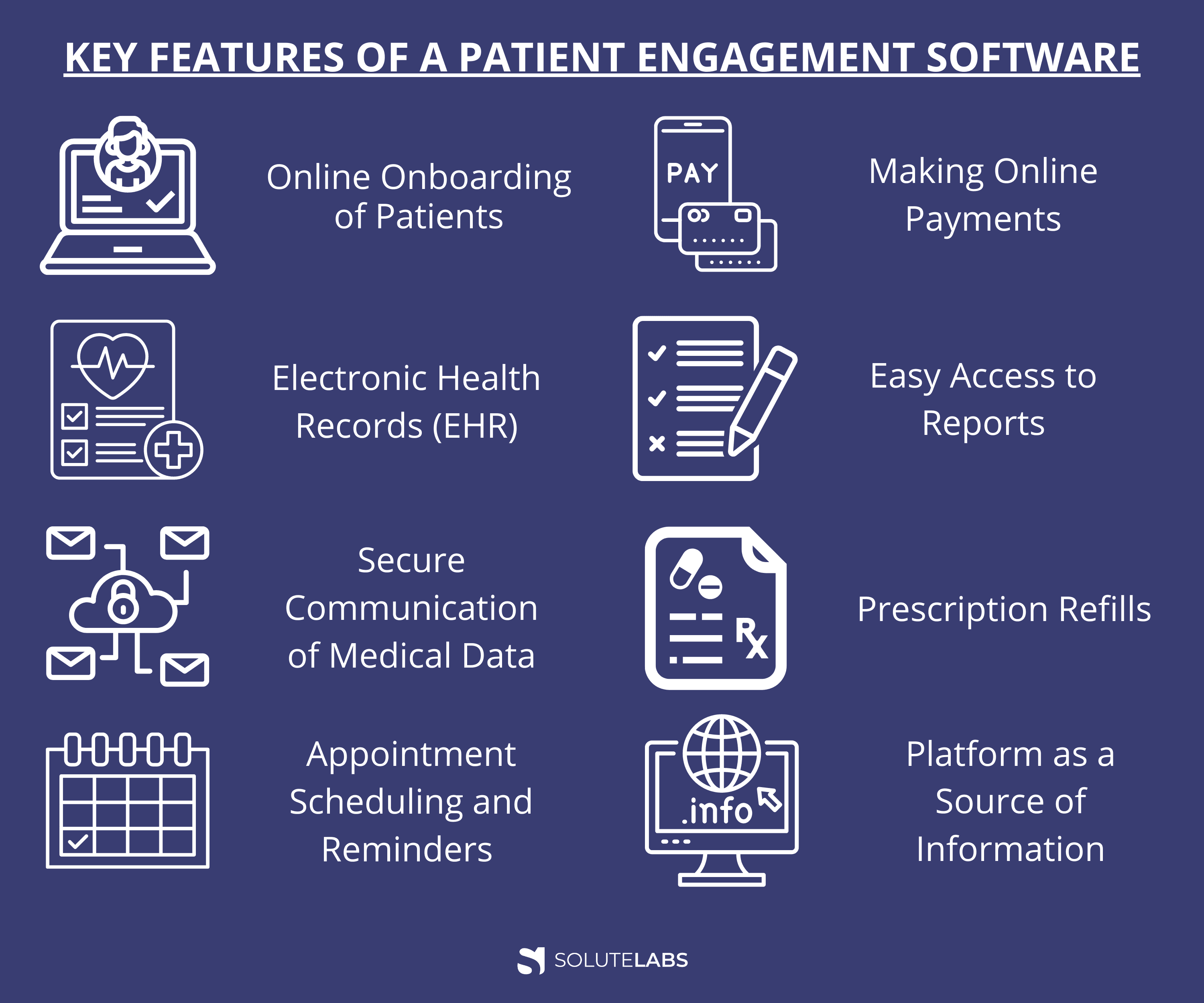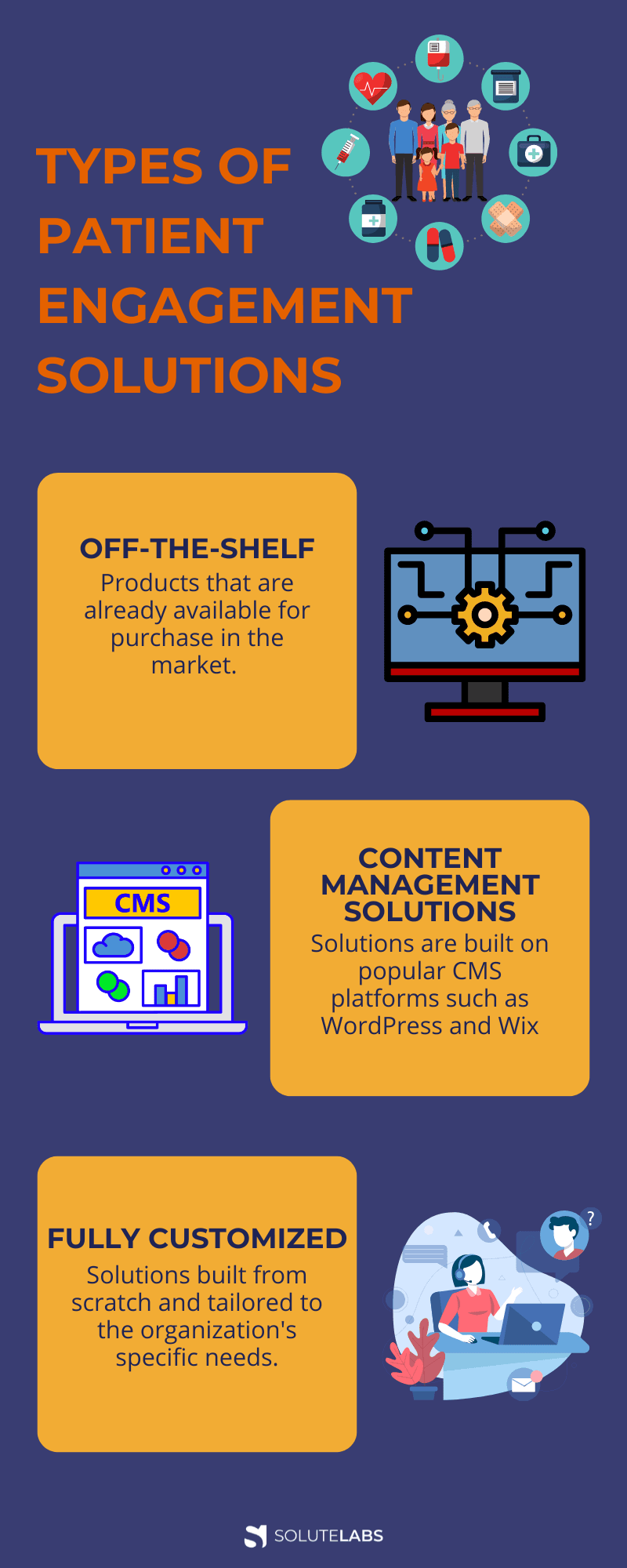Technology has been an indispensable player in transforming the healthcare sector by introducing amazing healthcare solutions to improve hospital operations significantly. Besides improving operational efficiency, reducing human errors, and revamping traditional healthcare, the health tech industry has also brought revolutionary breakthroughs.
Even though the healthcare industry has been rapidly evolving recently, it has always been a bit slow to adopting digital and other modern IT innovations.
The recent pandemic exposed the gaps and challenges faced by the healthcare industry worldwide. Patients were left high and dry in many hospitals, and there was extreme anger and dissatisfaction with the services provided. The medical fraternity has realized that having the best medical equipment isn't necessarily going to help their business if they cannot satisfy their patient's basic needs and provide them with a hassle-free experience first.
This is where adopting the best patient engagement software for hospitals has done a world of good. The platform helps bring doctors and patients closer, enabling better communication and higher quality of treatment, thereby saving many lives.
What is Patient Engagement in Healthcare?
Patient engagement in healthcare is the process or situation wherein patients will be informed in detail about all the available treatments, recovery, prescription choices or any other important medical solutions that would help them get better results.
Healthcare professionals have always sought ways to engage and improve patient collaboration. They want to encourage the patients to take care of themselves, but, at the same time, they also need to be available for their patients in case of any emergency. Patients must also be aware of their health problems, symptoms, medicines, diet restrictions, etc., to better care for themselves.
Patient engagement platforms are at the core of patient welfare and critical for the success of any healthcare organization.
Why is patient engagement software important?
- Higher patient satisfaction leads to better patient retention
- Quick, any-time access to doctors for patients
- Fast, easy access to patient data for health professionals
- Automated appointments, reminders, and follow-ups, thereby saving time and effort
- Growth in business revenue of healthcare providers due to the high quality of service
- Better compliance with healthcare industry regulations
Benefits of Patient Engagement Solutions
Engaging with patients is so critical for healthcare organizations that, if they fail to do so, they stand to lose out not only financially but also harm their reputation. And ultimately, it is the patient who is going to suffer the consequences of receiving inadequate care.
They need to invest in good patient engagement software that can ensure patients are always connected and are also able to manage their health better by making correct decisions concerning their illness and treatment. Both the patient and the healthcare system stand to gain if there is an overarching platform for patient engagement in place -
| Benefits for Patients | Benefits for Healthcare Systems |
|---|---|
Easy and quick access to their physician at any time | Easy access to patient's data and medical records |
Avoid emergencies by getting involved in regular, proactive health monitoring | Can treat patients quickly in the event of any emergency |
Quick diagnosis and treatment result in better health and fewer expenses | Better revenue due to more patient retentions |
Establish long-term relations with their health providers | Better patient retention due to the high quality of service |
Automated reminders help in regular follow-ups | Automatic scheduling of appointments saves time and effort |
Digitisation of records eliminates the use of sizeable physical paper files | Digitisation of records removes the use of paper and saves costs |
Challenges while using the Patient Engagement Platform
Even though there are numerous benefits of using a patient engagement system, it is not without its own set of challenges -
- The success of a patient engagement software depends on both the healthcare provider and the patients. If there is insufficient action from either side, the whole system is bound to fail. Suppose the patient doesn't show interest, is unwilling to share their details, or isn't capable enough to monitor their health proactively. In that case, making the program successful will undoubtedly be a big challenge.
- The problem described above can also present itself on the side of the healthcare provider. If the medical professional is not adequately trained on the platform or doesn't have enough time on his hands to effectively use the platform, then the system will break down.
- Building a quality patient engagement solution is going to cost money and time. Healthcare providers who run on tight funds may not be willing to invest in such solutions and may fall back on traditional healthcare methods.
- Some places may not have a well-developed IT sector or might be lethargic in adopting IT best practices. Developing and implementing patient engagement solutions in such areas will not be easy.
- People have communication preferences. Some may be comfortable with email, some like phone calls, and others prefer SMS or other messaging apps. Determining the best mode of communication for every patient will be a crucial challenge in patient engagement.
- Having an open feedback loop mechanism for the patient engagement platform is essential. Without a proper way to receive feedback, the system may not undergo any improvements, ultimately leading to a poor patient experience.
How do Patient Engagement Systems help increase your ROI?
The return on investment (ROI) for a software for patient engagement is genuinely realized only when there is healthy cooperation between healthcare professionals and patients. In addition, the patients must have a solid understanding of their illness, symptoms, risk factors, and treatment protocols, monitor their health conditions proactively and reach out to their providers as per the scheduled follow-ups.
The patient should be wholly involved in their treatment cycle and be able to make better-informed decisions for a healthier life. As a result, there should be an overall improvement in patient satisfaction ratings and a significant reduction in the number of doctor visits and mortality rates. The overall cost of providing healthcare will also see an appreciable reduction when this platform is put to practical use.
Some metrics that can be used to track the ROI of patient engagement are mortality rates, patient satisfaction ratings, patient no-shows, number of appointments, re-admission rates, software portal usage, compliance audit scores, etc.
As per this report, the patient engagement solutions market is pegged to reach $27.9B by 2027 from $17.3B in 2022, growing at a CAGR of 10.0% during this period.
Key Features of a Patient Engagement Software

Healthcare patient engagement solutions has some convenient features to improve the patient's welfare. Some of those features are listed here -
- Online Onboarding of Patients - Having patients register themselves online saves a lot of time and also avoids a lot of paperwork.
- Electronic Health Records (EHR) - Patients upload their medical data digitally in the form of EHR on the patient portal, which their physicians and other medical specialists can securely access.
- Secure Communication of Medical Data - One of the essential features of the patient engagement platform, it is critical for the doctor and the patient to exchange medical documents safely and securely, considering there will be a lot of PII data in them. Any leaks might result in a severe penalty by the local regulatory body and cause a loss of face for the company.
- Appointment Scheduling and Reminders - Scheduling is another fundamental feature of a patient engagement platform. This enables patients to schedule appointments with their physicians on a particular day and time. Appointment reminders help doctors to send follow-up reminders to their patients through text, email, or phone.
- Making Online Payments - Making payments online has been one of the pioneering breakthroughs of digital transformation. Making this feature part of the digital patient engagement platform is a no-brainer.
- Easy Access to Reports - The platform should allow patients to directly view and download their lab test results and other medical reports. They should also be able to send these documents securely to their physicians.
- Prescription Refills - The platform should enable the patient to request a prescription refill at the click of a button rather than going through direct appointments.
- Platform as a Source of Information - Educating patients through the platform is a nice-to-have feature where they can be provided access to all content related to their medical condition, which will help raise their awareness.
Different Types of Patient Engagement Solutions

There are 3 different types of Patient Engagement Solutions -
1. Off-the-Shelf - Off-the-shelf solutions are products that are already available for purchase in the market. Their price depends on their features, and healthcare companies can choose the product that aligns with their internal processes and budget. Subscription prices range from $19 for basic features and $499 per month for more advanced solutions. This solution usually suits individual practitioners/small teams with budgetary constraints.
The pros of this solution include ease of setup and low initial investment. Cons include no direct ownership of the platform, heavy dependence on the vendor to provide support and add new features, and the risk of the product version becoming outdated.
Some well-known solutions in this category are Vcita, NextHeath, RXNT, DoctorConnect, Modento, etc.
2. Content Management Solutions - These solutions are built on popular CMS platforms such as WordPress and Wix. These CMS platforms are ideal for creating features such as patient registration, appointment scheduling, doctor-patient communications, and patient education. The cost of such solutions ranges between $40K and $50K. Additional features can be added by purchasing 3rd party plugins or developing custom plugins. These are best suited for companies that need a quick solution with basic functionalities.
The pros of CMS solutions are that they can be set up quickly, and it is also easy to add new functionality through plugins. The cons are that it is not a very scalable solution, requires skilled personnel, and might require frequent upgrades to the underlying CMS.
3. Fully Customized - These are solutions built from scratch and tailored to the organization's specific needs. Since it is fully customized, it can be created and integrated with any technology. These solutions tend to be slightly expensive, starting at $50K. They are ideal for organizations that have good funding, run complex internal processes, consist of bigger teams, and are looking to expand in the future.
Pros include full ownership of the solution, ease of integration with existing services, better scalability, and personal choice of the underlying technology framework. The cons are that it is expensive, takes time to build, and requires skilled engineers.
Best Patient Engagement Technologies
Patient engagement healthcare apps predominantly fall under 2 categories - Web apps and Mobile apps. Web app refers to web application portals hosted on a cloud platform and accessed through the browser. Mobile apps are installed and accessed on mobile devices.
The technologies that have been used for patient engagement apps are -
Web Development frameworks -
- Angular JS
- React JS
- Node JS
- Ruby on Rails
Mobile frameworks -
- React Native
- Flutter
- iOS
- Android
Cloud Hosting platforms -
- Azure
- AWS (Amazon Web Services)
- GCP (Google Cloud Platform)
Which types of Healthcare Organizations need Patient Engagement apps?
The goal of any patient engagement application is to empower patients to make decisions that will improve their health outcomes. So it makes sense for every healthcare organization, ranging from startups to big enterprises, to have their patient engagement programs and corresponding patient engagement apps.
After all, they would all want to provide the best experience for their patients and retain as many patients as possible to make good revenue and build their reputation. Depending on the size and quality of their patient clientele, the needs may vary. For example, a healthcare practice with a small population of patients may need apps with only basic features such as booking appointments, refilling prescriptions, scheduling, etc.
Organizations with many patients would definitely need a more advanced, scalable, and robust healthcare engagement platform. Patients' quality and economic status also determine the level of patient engagement required. For organizations serving patients who are not well off or are not sufficiently educated, having an app that educates them on their illness and risk factors and helps them make better decisions for their care will help reduce their healthcare costs.
How can Solute Labs help you?
At SoluteLabs, we have always strived to produce the best and highest quality products for our clients in the healthcare space. We have serviced clients from startups to large-scale enterprises and helped them build apps and solutions for effective healthcare management.
For instance, we made a next-gen healthcare app for a UK-based startup that helps patients to connect to doctors through video consultation. Apart from the doctor and patient modules, the solution also comes with pharmacy and customer support modules, making it a near-comprehensive package. Booking appointments, raising prescription requests, and consulting through videos were all made super easy with this app.
If you want to build a patient engagement solution, look no further. Schedule a meeting to talk to our team today. Let's make an app that your doctors and patients will love!







